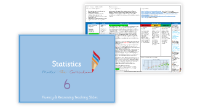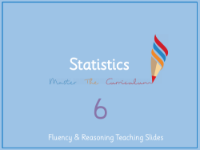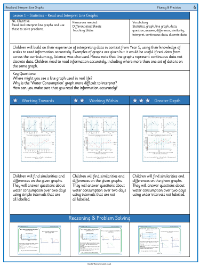Statistics - Read and interpret line graphs - Planning

Maths Resource Description
In the Year 6 summer term, students are introduced to the world of statistics with a focus on reading and interpreting line graphs, as well as understanding parts of circles and constructing pie charts. The National Curriculum objectives for this unit include the ability to solve problems using line graphs, name and illustrate circle parts such as the radius, diameter, and circumference, and understand that the diameter is twice the length of the radius. Furthermore, students will learn to interpret and construct pie charts and line graphs. The key vocabulary for this unit encompasses terms like statistics, graph, line graph, data, radius, diameter, circumference, pie charts, and interpret, among others. The lesson plan is designed to build upon the students' prior Year 5 experience with data interpretation, emphasising the use of scales for accurate reading of information and distinguishing between continuous and discrete data through class discussions and examples.
The lesson includes various activities to enhance students' understanding of line graphs. In Activity 1, students compare two line graphs to identify similarities and differences, and discuss real-life applications of line graphs. Activity 2 involves a practical exercise where students interpret a graph showing daily water consumption, answering questions about specific data points. In Activity 3, they analyse a graph tracking the growth of a plant, identifying and correcting mistakes in the data interpretation. The lesson also challenges students with an exercise to write stories and questions for graphs with unlabelled axes, thereby reinforcing their skills in reading and interpreting data accurately. The lesson aims to address common misconceptions, such as difficulty in reading data from the axis, and includes a reflection segment where students consider what they have learned, the skills they used, and what they found challenging. Differentiated worksheets cater to varying levels of understanding, from working towards the expected level to achieving greater depth in the subject matter.



